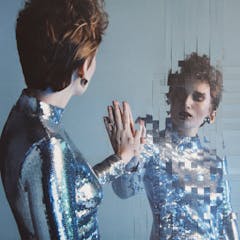
Articles on Digitization
Displaying all articles

The colonial era profoundly shaped natural history museums and collections. Herbaria, which are scientists’ main source of plant specimens from around the world, are no exception.

The European Union’s 10-year Human Brain Project is coming to a close. Whether this controversial 1 billion-euro project achieved its aims is unclear, but its online forum did foster collaboration.

A digital twin is to a computer model as live video is to a still photo. These virtual replicas can be used to understand and make predictions about a wide range of complex systems, including people.

During the coronavirus pandemic, digitizing archives can help increase access. But in addition to the labour and financial costs, issues of privacy, copyright and resources need to be considered.

The news media crisis is constant but there are a few practical solutions available to help the news business get out of the hole.

Films of the battle for Iwo Jima, being digitized 75 years after they were made, offer connections and lessons for Americans of today.

Centuries’ worth of important information is stored on paper – which can decay, burn or get eaten by pests. Peek inside the process of making all that data digital.

With each industrial revolution, food production and distribution has been revolutionized. With the current Fourth Industrial Revolution, can we address inequalities in food distribution?

Museums’ collections are a priceless resource for scientists, but they’re not easy to access. Digitizing specimens – like the 700 bat skulls the author studied – is a way to let everyone in.

A tiny percentage of museums’ natural history holdings are on display. Very little of these vast archives is digitized and available online. But museums are working to change that.
